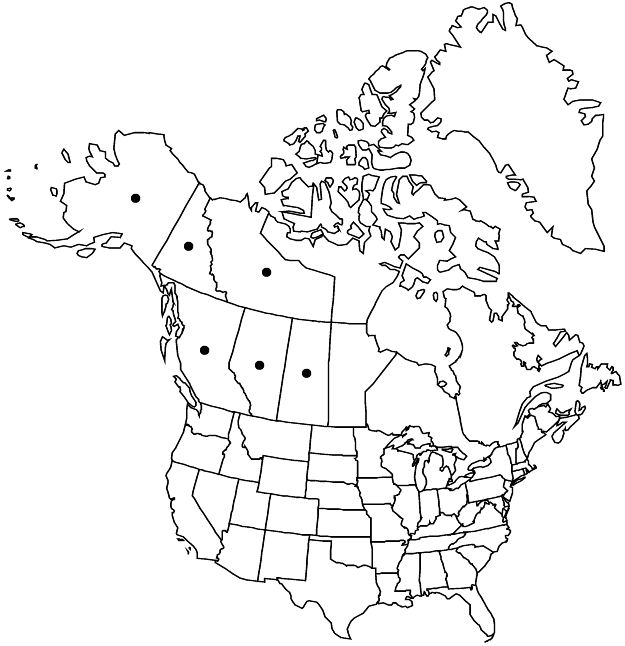Potentilla rubricaulis
Nov. Stirp. Pug. 2: 11. 1830.
Caudex branches not sheathed with marcescent whole leaves. Stems ascending to nearly erect, 1.5–4 dm. Basal leaves often both ternate and palmate on same plant, rarely subpalmate, 4–10 cm; petiole 2.5–7 cm, long hairs sparse to common, loosely appressed to ascending-spreading, 1–2 mm, ± weak to stiff, verrucose, short and/or ± crisped hairs common to abundant, cottony hairs absent, glands usually sparse; leaflets 3–5, proximalmost separated by 0 (–1) mm, central oblong to obovate, 1.5–4 × 1–2.5 cm, petiolules 0–5 mm, distal 2/3–3/4 of margin incised 1/2–3/4, rarely +, to midvein, teeth (4–) 5–8 per side, 4–5 mm, apical tufts 1 mm, abaxial surfaces gray to grayish white, long hairs abundant, cottony-crisped hairs usually dense, short hairs and glands absent or obscured, adaxial green to grayish green, long hairs sparse to common, 0.5–1.5 mm, stiff, short hairs absent or sparse, rarely common, crisped and cottony hairs absent, glands absent or sparse, rarely common. Cauline leaves 2–3. Inflorescences 4–20-flowered, open, branch angle (10–) 20–45°. Pedicels 0.5–3 cm, proximal to 5 cm. Flowers: epicalyx bractlets linear to narrowly lanceolate, 3–4 × 0.8–1.2 mm; hypanthium 4–6 mm diam.; sepals 4–5 mm, apex subacute to acute, glands usually ± sparse, not obscured; petals pale-yellow, not overlapping, 5–7 × (4–) 5–6.5 mm, distinctly longer than sepals; filaments 0.5–1.5 mm, anthers 0.4 mm; carpels 30–60, styles 0.9–1.1 mm. Achenes 1.2 mm. 2n = 56.
Phenology: Flowering summer.
Habitat: Sandy lake and stream shores, open sandy forests, dry grassy slopes, sandy and loamy bluffs, rock crevices, scree
Elevation: 0–1600 m
Distribution

Alta., B.C., N.W.T., Sask., Yukon, Alaska.
Discussion
As addressed by B. Ertter et al. (2013), the name Potentilla rubricaulis is here restricted to relatively large plants with open inflorescences occurring mainly in glaciated parts of subarctic northwestern Canada and Alaska. Plants from the Chugach Mountains of southern Alaska tend to be more conspicuously glandular than elsewhere.
The distinction between Potentilla rubricaulis and large forms of P. arenosa with supernumerary leaflets is problematic. Although both species have somewhat similar petiole vestiture (long, straight, verrucose hairs and a layer of short, stiff, or curly hairs), the latter species tends to have more stiffly spreading petiole hairs and prominently petiolulate central leaflets.
The octoploid chromosome count (P. M. Dansereau and E. Steiner 1956) from Great Bear Lake area, Northwest Territories, probably belongs to Potentilla rubricaulis in the narrow sense, since that is its type locality.
Selected References
None.
Lower Taxa
"thin" is not a number."dm" is not declared as a valid unit of measurement for this property."(" is not declared as a valid unit of measurement for this property."dm" is not declared as a valid unit of measurement for this property."dm" is not declared as a valid unit of measurement for this property.